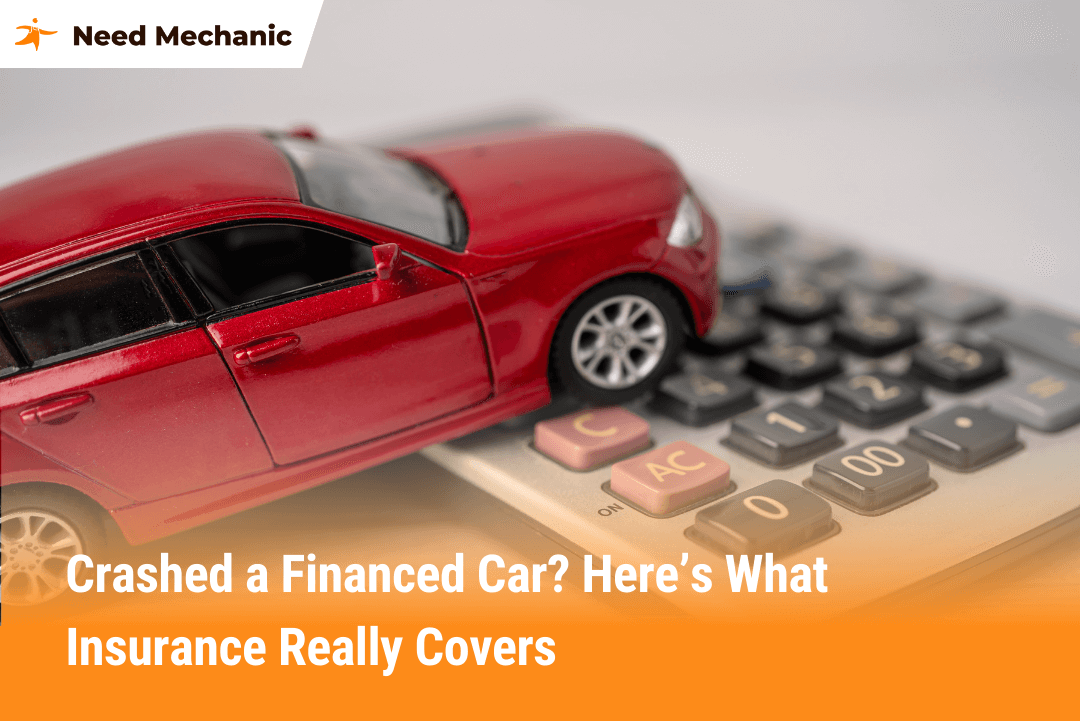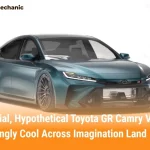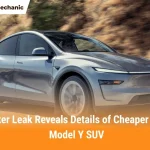If you crash a financed car with insurance, your policy usually pays to repair or replace the vehicle, but you’re still responsible for the loan until it’s fully paid off. The insurance payout goes first to the lender, since they technically own the car until your loan is cleared. If the payout doesn’t cover your remaining balance, you must pay the difference unless you have gap insurance.
This situation is very different from crashing a car you own outright, and it can be confusing for drivers who don’t realize how financing changes things. In this article, we’ll break it down step by step so you know what really happens, what coverage protects you, and how to avoid being stuck with debt after an accident.
Table of Contents
- Why Accidents With Financed Cars Are Different
- How Car Insurance Works With a Financed Vehicle
- What Happens Step by Step After a Crash
- What if the Car Is Totaled?
- Common Scenarios Explained
- How Insurance Payouts Work With Repairs
- Key Mistakes to Avoid After Crashing a Financed Car
- How to Protect Yourself Before an Accident
- Benefits of Understanding This Process
- Conclusion
- FAQs
Why Accidents With Financed Cars Are Different
When you finance a car, the lender still technically owns it until you finish paying off the loan. That means the bank, credit union, or dealership has a financial stake in the vehicle. Unlike someone who owns their car outright, you can’t just decide to stop paying the loan because the car is damaged. The lender expects to get paid, no matter what happens to the vehicle.
This is why accidents with financed cars carry added layers of responsibility. Even if the car is totaled, the loan balance remains. Your insurance payout helps, but whether it fully covers the balance depends on your coverage and the car’s value at the time of the crash.
How Car Insurance Works With a Financed Vehicle
Liability Insurance Only
If you only carry liability insurance, you may face serious problems. Liability coverage pays for the damage you cause to others – like another driver’s car, medical bills, or property, but it does not pay for repairs or replacement of your own financed car. In this case, you would still owe your lender the balance of the loan, even if your car is undrivable.
Collision Coverage
Collision insurance pays for repairs or replacement of your car after an accident, regardless of who caused it. If you financed your car, lenders usually require you to carry collision coverage so that their financial investment is protected. After a crash, this coverage kicks in to repair or replace the vehicle up to its actual cash value (ACV).
Comprehensive Coverage
Comprehensive coverage protects your financed car against non-collision events such as theft, fire, vandalism, or storm damage. Like collision, this type of coverage pays based on the car’s ACV at the time of loss.
Gap Insurance
This is one of the most important add-ons for financed cars. Gap insurance covers the difference between what you owe on the loan and what your car is worth. Since vehicles depreciate quickly, it’s common to owe more than the car’s value, especially in the first few years. If your car is totaled and insurance pays less than your loan balance, gap coverage ensures you’re not stuck making payments on a car you no longer have.
What Happens Step by Step After a Crash
- Immediate Safety and Reporting
After the accident, ensure safety, call emergency services if needed, and report the crash to the police. Documentation is essential, especially for insurance claims. - Contacting Your Insurance Company
Notify your insurance provider right away. They’ll guide you through filing a claim, collecting evidence, and arranging vehicle inspection. - Claim Evaluation
The insurance adjuster evaluates the damage and determines whether your car can be repaired or if it’s a total loss. - Repair or Settlement
- If repairable, the insurance company pays for repairs (minus your deductible).
- If totaled, they pay the ACV of the car at the time of the crash.
- If repairable, the insurance company pays for repairs (minus your deductible).
- Lender Involvement
Since the car is financed, the settlement check often goes directly to the lender to pay down your loan. If there’s money left after paying off the loan, you receive the difference. If the settlement doesn’t cover the balance, you’re responsible for the remainder, unless you have gap insurance.
What if the Car Is Totaled?
This is the scenario that causes the most stress for drivers with financed cars. When a car is declared a total loss:
- Insurance Pays the ACV: The insurer calculates the car’s market value right before the crash.
- Loan Balance vs. Payout: If your loan balance is higher than the ACV, you owe the difference.
- Gap Coverage Saves You: If you purchased gap insurance, it pays the difference between the ACV and what you still owe, wiping out the remaining debt.
Without gap insurance, you might end up paying thousands of dollars for a car you can’t even drive.
Common Scenarios Explained
Scenario 1: You Have Full Coverage and Gap Insurance
- Car is totaled.
- Insurance pays ACV, lender gets their money.
- Gap insurance covers the loan remainder.
- You walk away without debt, ready to shop for another car.
Scenario 2: You Have Full Coverage but No Gap Insurance
- Car is totaled.
- Insurance pays ACV, but it’s less than your loan balance.
- You’re stuck paying the remaining loan even though the car is gone.
Scenario 3: You Only Have Liability Insurance
- Car is totaled.
- Insurance pays nothing for your vehicle.
- You still owe the full loan balance.
- Financial burden is heavy unless you can pay off the loan yourself.
How Insurance Payouts Work With Repairs
If your financed car can be repaired, the insurance company may send the repair payment directly to the auto body shop, sometimes with the lender’s approval. The lender wants to ensure the vehicle is restored because it is still their collateral.
Keep in mind that you’ll still need to pay your deductible out of pocket.
Key Mistakes to Avoid After Crashing a Financed Car
- Stopping Loan Payments: Even if your car is totaled, never stop making loan payments until everything is settled. Missed payments hurt your credit.
- Not Having Gap Insurance: This is one of the most overlooked protections. Without it, you may owe thousands on a car you no longer own.
- Assuming “Full Coverage” Means Everything: Full coverage is not an official term, it usually means collision and comprehensive, but it doesn’t automatically include gap insurance.
- Delaying Claim Filing: Waiting too long to file can result in denied claims. Act quickly.
How to Protect Yourself Before an Accident
- Review Your Loan Balance Regularly: Know how much you still owe compared to your car’s market value.
- Consider Gap Insurance: Especially in the first few years of financing when depreciation is steep.
- Maintain Adequate Coverage: Keep collision and comprehensive as long as you owe money on the vehicle.
- Shop Around for Better Insurance: Different insurers calculate ACV differently. Choosing the right company can impact your payout.
Benefits of Understanding This Process
By knowing what happens if you crash a financed car with insurance, you:
- Reduce stress after an accident.
- Make informed decisions about your coverage.
- Avoid unexpected financial losses.
- Ensure your credit and finances stay protected.
Conclusion
Crashing a financed car is stressful, but insurance is designed to protect you, if you have the right coverage. The key lesson is this: insurance pays for the car’s value, not what you owe on it. That’s why gap insurance and proper coverage are critical when financing a vehicle.
By planning ahead and understanding how the process works, you can avoid financial surprises, protect your credit, and move forward with peace of mind even after an accident.
FAQs
Do I still have to pay the loan if my financed car is totaled?
Yes. You are still responsible for the loan balance until it is fully paid, even if the car is destroyed. Insurance pays the car’s value, but not automatically the full loan amount.
What if my insurance payout is less than what I owe?
If your insurance payout doesn’t cover the remaining loan, you must pay the difference. Gap insurance can protect you by covering this shortfall.
Who gets the insurance check after a crash?
The insurance company usually pays your lender first, since they are the legal owner until the loan is paid off. If there’s extra after paying the loan, you receive the remainder.
Does liability insurance cover my financed car?
No. Liability insurance only covers damage or injury you cause to others. To protect your financed car, you need collision and comprehensive coverage.
What does gap insurance do?
Gap insurance covers the difference between your car’s actual cash value (insurance payout) and the amount you still owe on the loan, so you don’t pay out of pocket for a totaled car.
Will my insurance rates go up after crashing a financed car?
Most likely yes, especially if you were at fault. Even if your policy pays the lender, your premium can rise due to the claim.
Can I stop paying my loan after a crash?
No. Stopping payments can damage your credit. You must keep paying until insurance and/or gap coverage clears the loan.
What if the accident wasn’t my fault?
If another driver caused the crash, their liability insurance should cover your damages. If they are uninsured, your collision or uninsured motorist coverage applies.
Can I use the insurance money to buy a new car?
Only if the payout is more than what you owe. In that case, your lender is paid first, and the leftover funds go to you.
Is gap insurance required for financed cars?
It’s not legally required, but many lenders recommend or require it. Even if not required, it’s strongly advised to avoid paying out of pocket after a total loss.




Leave a Reply